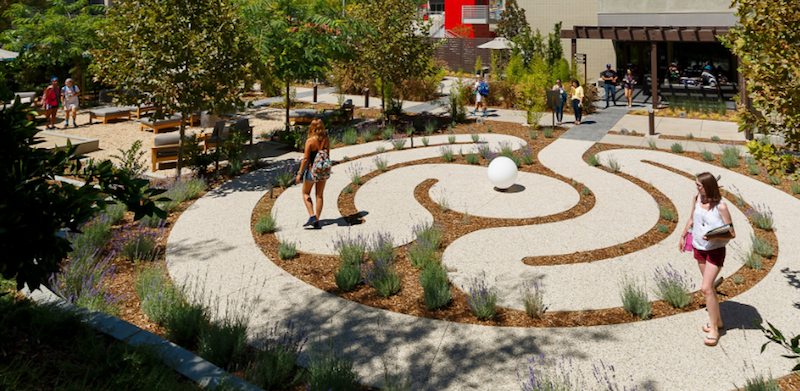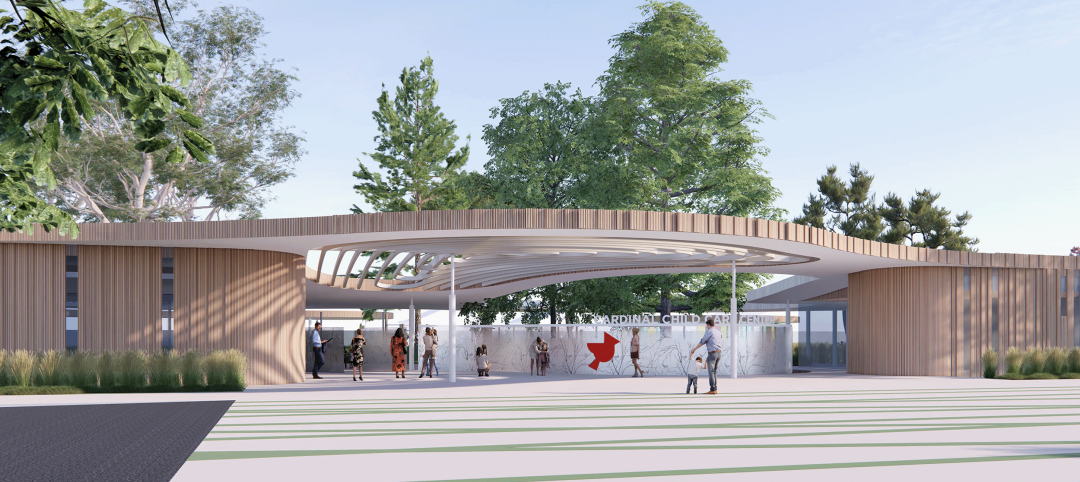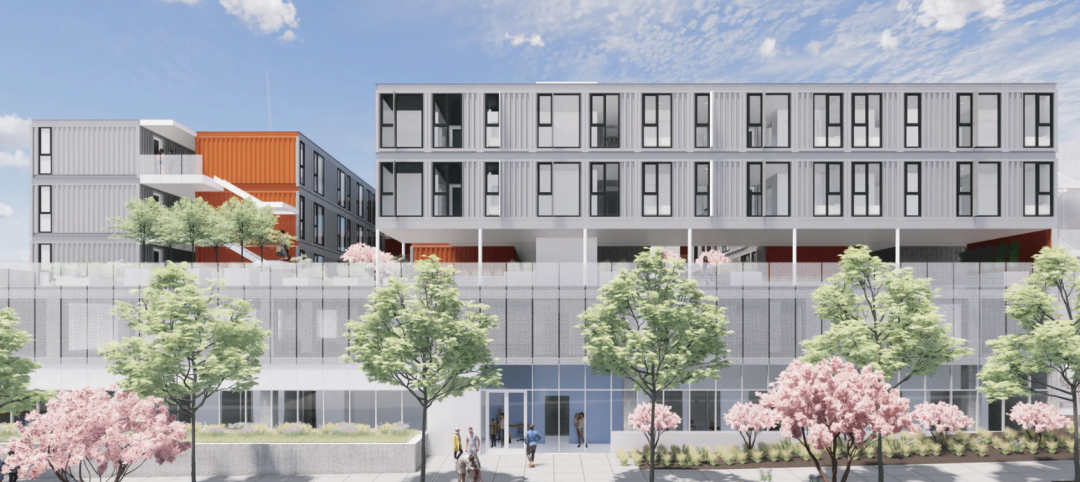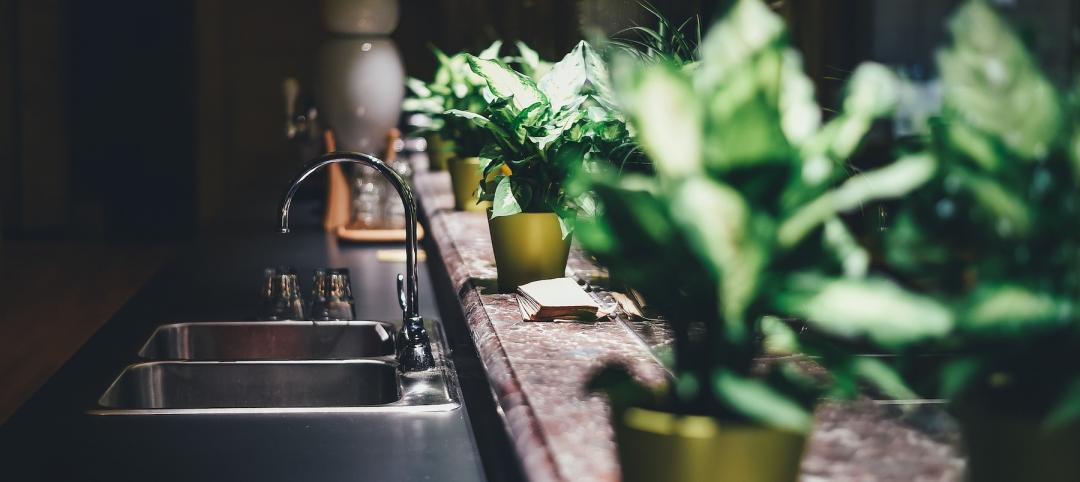The philosophy of active design makes a student’s well-being and health a key priority in campus design. An active environment helps students develop the body and mind, creating a setting where they learn to make healthy choices and establish habits that last a lifetime.
Active design can be incorporated into any facility or campus with a few simple steps. Apply any of the following ideas for a simple but effective way to enhance student life:
Connect People and Place
Whenever possible, celebrate collaboration and provide opportunities for students to share—whether it be knowledge, culture or school pride. For students at e3 Civic High, whose school is located within two floors of San Diego’s nine-story public library, the floors are connected by a wood grand staircase that serves as an amphitheater and social hub. This prominent feature provides an interior wayfinding landmark that inspires physical activity and social connection.
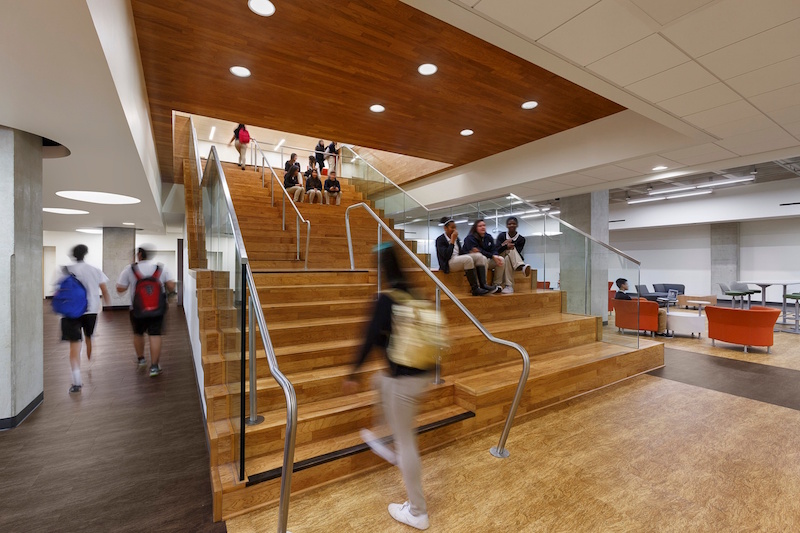
Use Design as a Guide
Design features can inform how people use and navigate through spaces. At Palomar College in North San Diego County, a landscaped courtyard at the center of the building is surrounded open walkways instead of interior lobbies and corridors. Studies show the average American spends 93 percent of time indoors, but the human need to connect with nature remains. These outdoor social spaces not only encourage interaction and student engagement, but suggest vertical circulation through iconic glass enclosed stairs instead of elevators in this biophilia-inspired environment.
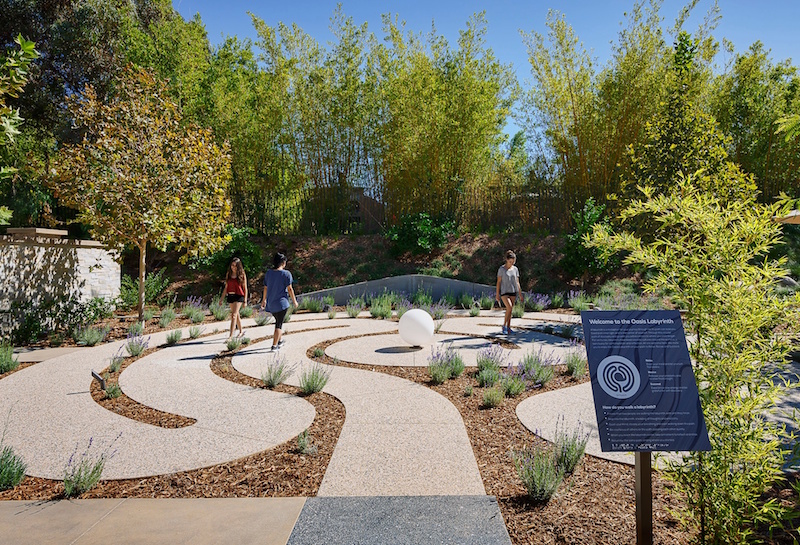
Create a Space for Mindfulness
Provide an opportunity for people to develop an awareness and connection to their surroundings, and ultimately mindful of the moment. Colleges and universities are seeking to help students balance their lives to achieve academic success, specifically coping with stress and sleep deprivation. At California State University, Northridge, the Oasis Wellness Center features a labyrinth that encourages exploration and provides an opportunity to disconnect and reconnect all at the same time. For centuries, these paths have been used for spiritual centering to quiet the mind, steady breathing and a metaphor of a journey focused on reflection and contemplation.
By integrating connections, nature, social and mindfulness features, any educational environment becomes more than just a place of knowledge. These holistic settings truly provide value to its occupants where the focus shifts to developing our students in a comprehensive way that helps them balance academic and student life to support their educational goals.
More from Author
LPA | Aug 26, 2024
Windows in K-12 classrooms provide opportunities, not distractions
On a knee-jerk level, a window seems like a built-in distraction, guaranteed to promote wandering minds in any classroom or workspace. Yet, a steady stream of studies has found the opposite to be true.
LPA | May 13, 2024
S.M.A.R.T. campus combines 3 schools on one site
From the start of the design process for Santa Clara Unified School District’s new preK-12 campus, discussions moved beyond brick-and-mortar to focus on envisioning the future of education in Silicon Valley.
LPA | Mar 28, 2024
Workplace campus design philosophy: People are the new amenity
Nick Arambarri, AIA, LEED AP BD+C, NCARB, Director of Commercial, LPA, underscores the value of providing rich, human-focused environments for the return-to-office workforce.
LPA | Feb 8, 2024
LPA President Dan Heinfeld announced retirement
LPA Design Studios announced the upcoming retirement of longtime president Dan Heinfeld, who led the firm’s growth from a small, commercial development-focused architecture studio into a nation-leading integrated design practice setting new standards for performance and design excellence.
LPA | Mar 2, 2023
The next steps for a sustainable, decarbonized future
For building owners and developers, the push to net zero energy and carbon neutrality is no longer an academic discussion.
LPA | Dec 20, 2022
Designing an inspiring, net zero early childhood learning center
LPA's design for a new learning center in San Bernardino provides a model for a facility that prepares children for learning and supports the community.
LPA | Aug 22, 2022
Less bad is no longer good enough
As we enter the next phase of our fight against climate change, I am cautiously optimistic about our sustainable future and the design industry’s ability to affect what the American Institute of Architects (AIA) calls the biggest challenge of our generation.
LPA | Aug 9, 2022
Designing healthy learning environments
Studies confirm healthy environments can improve learning outcomes and student success.
LPA | Jul 6, 2022
The power of contextual housing development
Creating urban villages and vibrant communities starts with a better understanding of place, writes LPA's Matthew Porreca.
LPA | Mar 21, 2022
Finding the ROI for biophilic design
It takes more than big windows and a few plants to create an effective biophilic design.

